OS X 10.9 Mavericks supports the protocol VNC – Virtual Network Computing to connect 2 remote computers which is done via ‘Screen Sharing‘.
Here are 2 ways to connect one is using the the Screen Sharing application buried deep in the file system the other is a quick way using the Shared Devices in the sidebar in the finder.
Using Screen Sharing
Set Up the Remote Machine You Are Connecting To
For the machine that you want to connect to you need to make sure it has screen sharing enabled.
Enable ‘Screen Sharing’ via the System Preferences under the Apple Menu.
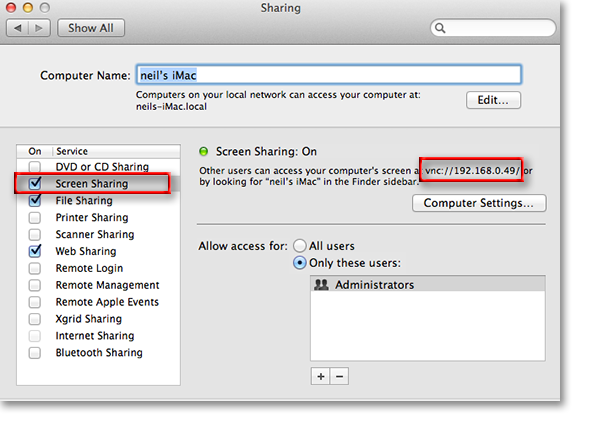
If the option is greyed out it will be because ‘Remote Management’ is on, Remote Management also uses VNC and is tied to Apple Remote Desktop (ARD) both cannot run simultaneously, disable Remote Management and Screen Sharing will be accessible.
Set Up the Remote Machine You Are Connecting From
On the machine that you are connecting from whilst in the Finder, either click on the ‘Go’ menu in the Finder or “command+k” keys to bring up the ‘Connect to Server’ dialog box or drag the Screen Sharing.app lurking in the depths below to your Dock as an alias and launch that every time.
This is found in:
/System/Library/CoreServices/, you can get to this by clicking the ‘Go to Folder’ also in the ‘Go’ menu in the Finder.
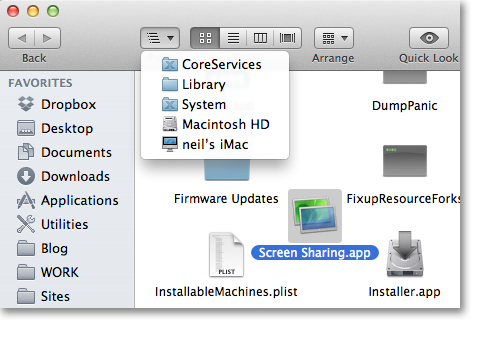
Whichever method you use to connect, the address method you enter is the same – vnc://ipaddress

When the connection is made you will be prompted to authenticate as an admin user account residing on the machine you are logging into
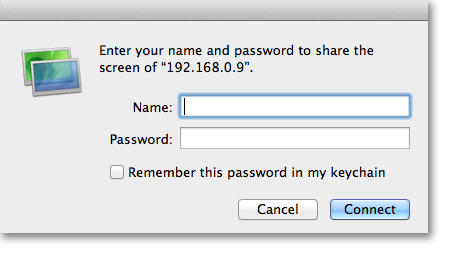
Enter the correct details and you will then see and control the remote computer on your screen.
You can avoid entering the username for the remote machine in the follow up login dialog box by adding the username to the connection string in the initial connection like so…
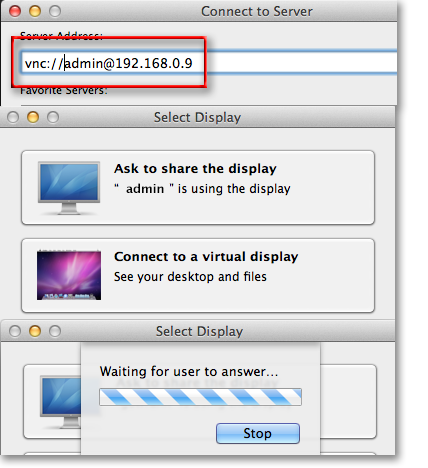
As long as the user exists on the remote computer you will just be asked for your password.
If there is a user currently logged you get the option to share their screen or just go straight to yours; you can ask the currently logged in user to share their screen or choose to see your own account not interrupting the current user by selecting the ‘virtual display’ button.
Connect Via Bonjour Computer in Shared Devices in Finder
Even easier than remembering IP addresses and connection VNC strings is to log into screen sharing via the Bonjour listing.
In the Finder go to the Preferences menu and under ‘Shared’ – checkbox the ‘Bonjour Computers’ a list of machines on your local area network will then appear under your ‘Shared’ devices in the sidebar, so now all you have to do is click the computer you want and then the ‘Share Screen…’ button top right.
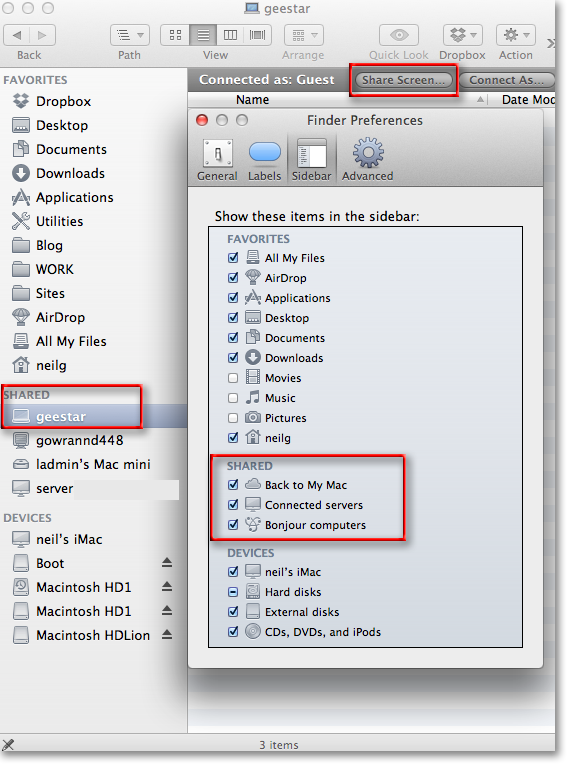
Or if you know the bonjour local name of a machine on the network you could enter in the Connect to Server dialog box –
vnc://machinename.local but you’ll have to close any spaces with hypens and remove apostrophes.
Connect Via External IP Address
To make this work to connect to a computer outside of your local network you need to have a static public IP address make a change to your router port forwarding settings.
So lets say you want your office machine to always be accessible whilst you are on the road and want to connect in every now and then. You need to know your router IP address and your external IP address.
Router IP address is typically a home network address most probably 192.168.0.1 or 192.168.1.1 with really easy default passwords ‘admin’ and ‘password’ spring to mind – if you can’t remember Google the model and if you have changed it and can’t remember get out your trusty paper clip, stick in the slot and reset the thing.
To know your real external IP address get it from http://www.whatsmyip.org/
Connect into your router admin settings via a browser http://192.168.0.1 or similar
Look for the Firewall section and anything that mentions VNC
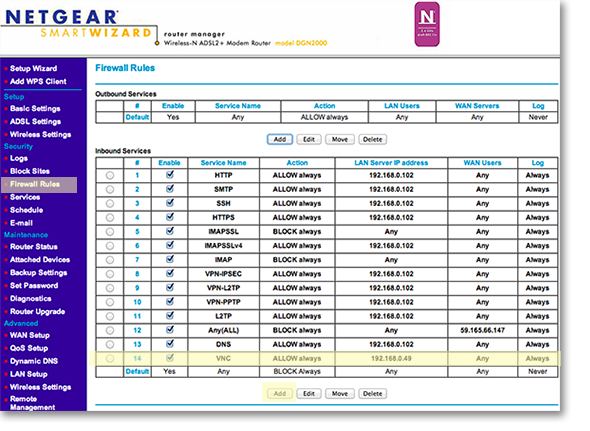
If it does one doesn’t exist (likely) than add a new service…
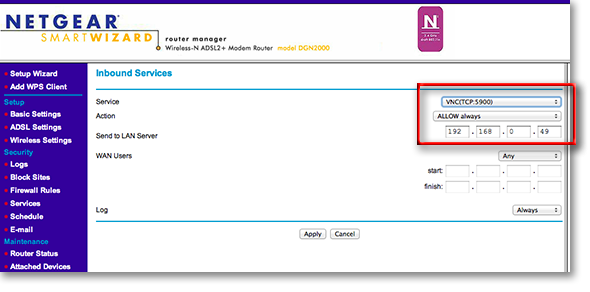
The Service is VNC the port is 5900 – set it to allow the service and then send the service to your preferred machine on the local network (this machine will need a fixed local IP address similar to the router – its network settings can’t be set to DHCP.
Once that is all set up test your screen sharing connection from a machine outside of the network – connect in the ‘Connect to Server‘ from the Go menu in the Finder via:
vnc://externalIPaddress or vnc://username@externalIPaddress
You should see your remote computer behind the router – be careful here – since you are opening up a hole in your firewall make sure that your local machine has a harder password – if it is easy than you can be compromised. Numbers upper and lower case letter and symbols are the order of the day!